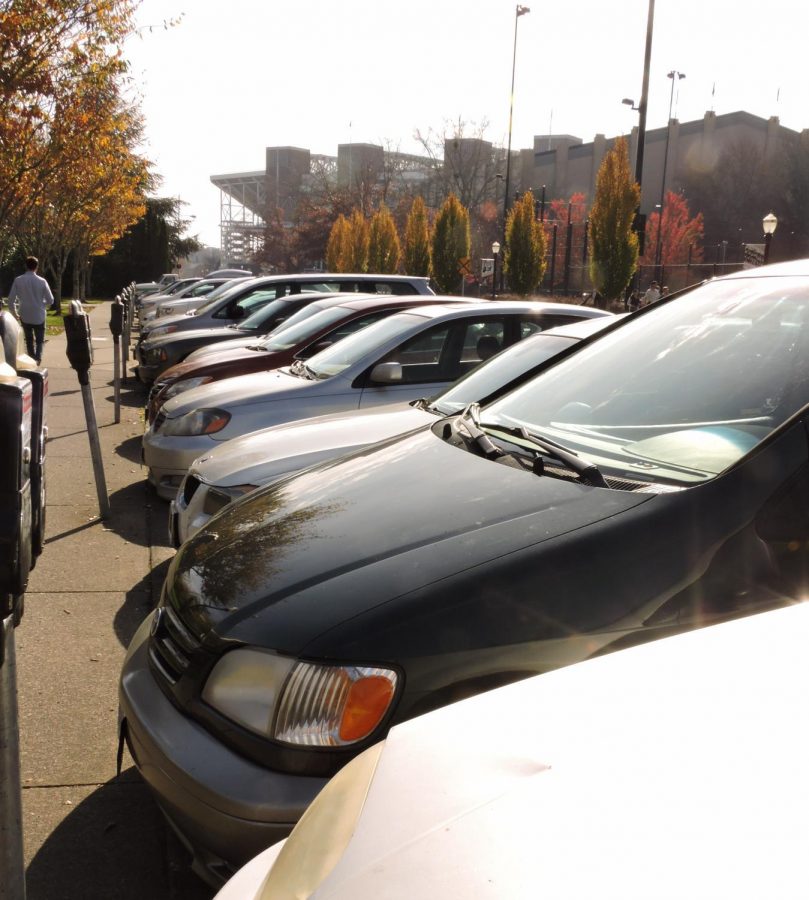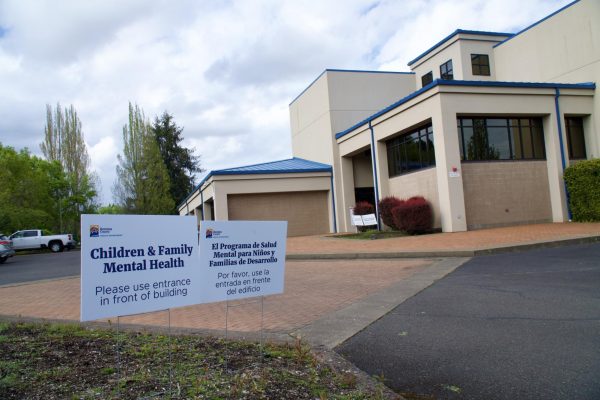Increased attendance, decreased space has made finding a spot difficult for many
November 14, 2016
Parking at Oregon State University can be a nightmare.
With an ever-growing student body, which this year passed 30,000 students, competition for a parking spot can lead to parking several blocks from campus. Making matters more complicated are the City of Corvallis’ residential parking districts, A, B and C. These districts are located in the neighborhoods surrounding campus, and each have two hour parking limits for those without a permit, and district permits are only available to residents.
“The city council tried to find a middle ground, not give students too much, not give residents too much,” said Mary Steckel, public works director of the City of Corvallis. “So you see on the signs that anyone can park there for two hours, but to park there for longer, you need a permit. The only way to get a permit is to live in that district.”
According to Steckel, Corvallis created the districts because residents were having a difficult time finding parking. Many houses in the districts do not have driveways, so the only place for residents to park is on the street.
“They don’t want someone hopping around,” Steckel said. “The system is setup to make it unattractive to people who don’t live there. Not impossible, but not the first choice, either.”
A parking violation costs $45, and since the start of 2016, parking enforcement has issued 3,356 residential parking zone violations. However, Corvallis Parking Officer Alice Derrickson does not always penalize for infractions.
“If they’re there, depending on the situation, I can ask them to move the vehicle,” Derrickson said. “There’s a number of educational options. There’s verbal warnings, there’s written warnings and there’s penalty education.”
Derrickson communicates with people every day, and hopes if she talks to somebody or gives them a written warning, that it will stop their behavior. However, nobody is perfect.
“I’ve gotten two tickets in the past few months and I’ve paid them both. I don’t get a break either,” said Mark Zandonella, parking manager at OSU Transportation Services.
Parking on campus can be expensive, and Zandonella said that OSU’s Transportation Services introduced a tiered parking system because much of campus parking was being underutilized. The previous parking system charged $195 for student permits and $260 for staff, across the board.
The new tiered system breaks parking down into four levels: A, B, C, and D. A is the most expensive, at $504 a year, but closer to campus. D costs $76 a year, but is further from campus.
“People would call us and tell us ‘C is full,’ meaning Reser Stadium, and these spots would not be used,” Zandonella said.
Under the tiered system, Transportation Services has seen an increase in parking utilization, and recent added 150 parking spaces, at $98 a spot. Zandonella also said it is important for students to understand the cost of new parking spaces.
“We don’t take from the general funds. All our funding comes from the permits,” Zandonella said. “So when you build an average, 100 space lot, and each space is $6,000 to $8,000, it gets quite expensive. For a parking structure, it gets even more expensive. For a parking garage in Oregon, a space costs an average of $19,000, and then to maintain it, too.”
More parking spaces also means more resources used, which is not always an option. Real estate is limited, and new buildings have been constructed in the place of old parking lots.
Zandonella understands that some people have to drive. However, there are alternatives to driving. The Beaver Buses are free to students, and the Corvallis bus system and the Linn Benton Loop are free to everyone. Biking and walking are also an option. Transportation Services also employs a transportation coordination officer to help students determine their best transit options.
“We are aware of our impact on the environment. We have to be good custodians to that resource, because it is limited,” Zandonella said.
























































































































